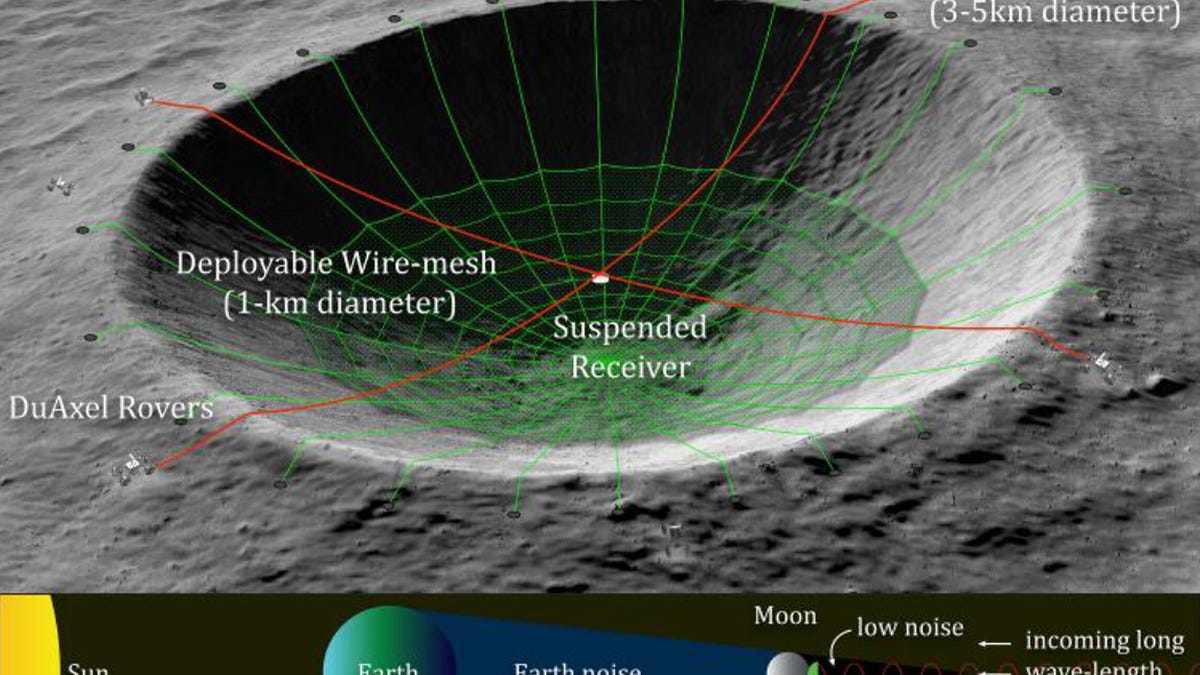NASA contemplates turning a moon crater into a giant, powerful telescope
The far side of the moon would be a great place to stare out into the cosmos.
We have telescopes on Earth. We have telescopes in space. So how about a telescope on the moon? It has so many lovely craters that are already in the shape of a telescope dish.
NASA has selected a lunar-crater radio telescope idea to receive funding through its NASA Innovative Advanced Concepts (NIAC) program, the agency announced on Tuesday. The Phase I award goes to projects in very early stages of development.
Saptarshi Bandyopadhyay, a robotics technologist at NASA's Jet Propulsion Laboratory, is the mind behind the moon dream. Making it happen would require sending robots to the far side of the moon and using the machines to deploy a wire mesh over a crater.
Bandyopadhyay's proposal lists the benefits of locating a telescope on the far side of the moon, including that "the moon acts as a physical shield that isolates the lunar-surface telescope from radio interferences/noises from Earth-based sources, ionosphere, Earth-orbiting satellites, and sun's radio-noise during the lunar night."
The moon telescope project is one of 23 concepts that received part of a $7 million (£5.6 million, AU$11.2 million) investment through NIAC. The Phase I award consists of $125,000 to fund a nine-month study of the idea. Other concepts include investigating solar sails, lunar landing pads and a robotic explorer for Saturn's moon Enceladus.
NASA pointed out that these projects will mostly require a decade or more of technology development, and that they are not official NASA missions. These fascinating ideas are worthy of deeper investigation, though, and could one day move from concept to reality.


